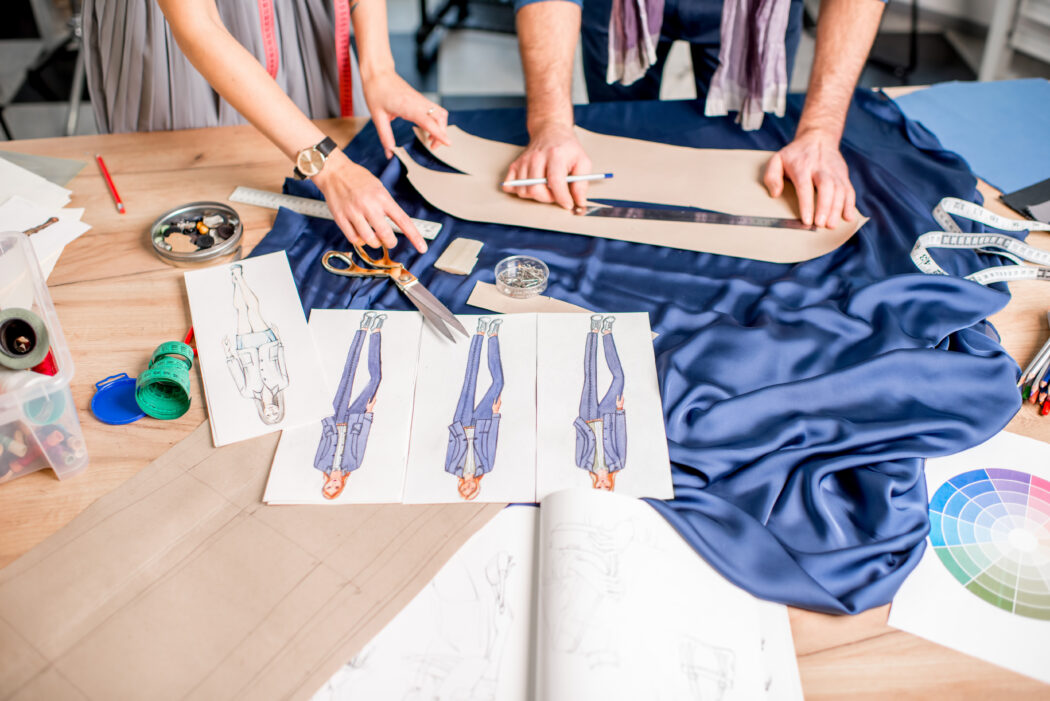How The Strong Inventory Relates to a Fashion Designer.
For centuries, people have utilized the Strong Interest Inventory (SII) Assessment as a tool to help them identify their interests and preferences in various areas, including careers and college major exploration. The Artistic Theme Code, one of six categories in the Strong Interest Inventory Assessment, encompasses careers that involve creativity, aesthetic appreciation, and self-expression. Fashion Designers are categorized in Artistic Theme Code, as their jobs involve creating new designs and styles for clothing and accessories, often with the use of various materials and techniques. Fashion designers must have a strong sense of aesthetics and imagination, as well as the ability to think innovatively. People who score high on the Artistic theme in the Strong Interest Inventory Assessment are drawn to careers that allow them to express their ingenuity and work with a variety of products and art forms. Fashion design can be a fulfilling and pleasing career path for those who appreciate working in a creative and dynamic field.
What Does a Fashion Designer Do?
A career as a fashion designer involves creating clothing and accessories that are both aesthetically pleasing and functional. This can include designing clothing for various types of events, such as weddings, proms, and red-carpet events, as well as designing clothing for everyday wear. Fashion designers may work for a fashion house, clothing manufacturer, or freelance designer. The design process typically starts with research and conceptualization, where fashion designers gather inspiration and ideas for their designs. They may also sketch their ideas and create prototypes or samples of their designs to see how they look and fit on a model. Once the design is finalized, fashion designers work with a team of pattern makers and garment technicians to create the final product. Fashion designers can specialize in a variety of areas within the fashion industry, such as haute couture, ready-to-wear, sportswear, lingerie, and more. Some fashion designers may specialize in a particular type of clothing, such as outerwear or formal wear. Others may specialize in a particular material, such as denim or leather.

Write-up describing the Strong Interest Inventory Conventional Theme Code Fashion Designer’s careers as well as fashion designer salary, career growth, and more
A Fashion Designer’s Day-to-Day Tasks and Tools
Fashion designers must stay up to date on current fashion trends and must be able to translate these trends into their designs. Their day-to-day task includes researching up-to-date and future fashion trends. They also need to develop designs and sketches of their concepts. They must also have a good understanding of fabrics, textiles, and accessories and must be able to choose the right materials for their designs. They are also responsible for overseeing the production of their creation and doing some quality inspections. Sometimes, fashion designers are required to stay up to date on fashion trends and be present in fashion shows and events.
As stated by The Dept’ of Labor, The Following Work Tasks are Most Often Completed by Fashion Designers:
- Create artistic or design concepts for decoration, exhibition, or commercial purposes.
- Organize design activities.
- Illustrate detailed or technical artwork.
- Create informational material.
- Work together with others to develop or refine designs.
- Oversee current trends.
- Perform market research.
- Choose materials or props.
- Advertise products, activities, or organizations.
- Create models, patterns, or templates.
- Keep track of inventories of materials, equipment, or products.
- Perform research to inform art, designs, or other work.
(Retrieved from O’netOnline.org. Fashion Designer Career. Career Code: 27-1022.00 Detailed Work Activities)
- Supervise and coordinate workers involved in drawing and cutting patterns and making samples or finished garments.
- Assess sample garments on and off models, modifying designs to attain desired effects.
- Draw rough and detailed drawings of attire or accessories, and write specifications such as color schemes, construction, material types, and accessory requirements.
- Deliberate with sales and executives or with clients to discuss design concepts.
- Recognize target markets for designs, considering factors such as age, gender, and socioeconomic status.
- Appear in fashion shows and review garment journals and manuals to gather information about fashion trends and customer preferences.
- Choose materials and production techniques to be used for products.
- Offer sample garments to agents and sales representatives and organize showings of sample garments at sales conventions or fashion shows.
- Modify other designers’ ideas for the mass market.
- Acquire new or used clothing and accessory items as needed to complete designs.
- Go to textile showrooms to maintain up-to-date on the latest fabrics.
- Connect with other designers to coordinate special products and designs.
(Retrieved from O’netOnline.org. Fashion Designer Career. Career Code: 27-1022.00 Tasks- Category-Core.).
Graphic design software is used to create digital illustrations, patterns, and prints for clothing and accessories. This software allows fashion designers to experiment with different color combinations and designs and to create high-quality graphics that can be used in their marketing materials and presentations. Fashion designer uses the following software and tools,
- Computer-Aided Design, Adobe Illustrator and Photoshop
- Project Management Tools, e.g., CRM
- Design Collaboration Tools, e.g., InVison, Figma, Mockplus
- MS Word and MS Presentation
In addition to digital tools, fashion designers also use traditional tools and materials, such as sketchpads, fabric swatches, and sewing needles. They may also use draping techniques to create prototypes of their designs, and they may work with a team of pattern makers and garment technicians to bring their designs to life.
Experience and Education
To become a successful fashion designer, it is important to have a strong educational background in fashion design or a related field. Many aspiring fashion designers choose to pursue a bachelor’s degree in fashion design or a related field, such as textile design or graphic design. These programs provide students with a solid foundation in design principles, color theory, textile science, and clothing construction. They also offer opportunities for students to develop their creativity, technical skills, and critical thinking abilities.
During a bachelor’s degree program in fashion design, students typically learn about different aspects of the design process, including research, conceptualization, prototyping, and production. They may also learn about the history of fashion, the social and cultural impact of fashion, and the industry’s business aspects. In addition to traditional classroom instruction, students may also have opportunities to participate in hands-on.
Salary and Wages
According to the US Bureau of Labor Statistics, the median annual wage for Fashion Designers and the like is $ $77,450. In New York, where Fashion Industry is more prominent, the top 10% of Fashion designers earned $157,150 or more while the bottom earned 10% earned $49,610 or less, and on average, that’s $80,570.
The median annual salary for fashion designers in the United States was $72,720 in May 2020. Some fashion designers choose to start their own businesses, either as independent contractors or entrepreneurs. This can provide them with more control over their careers and the potential to earn higher salaries. Fashion designers who are willing to work in international markets may be able to command higher salaries due to the higher cost of living and the greater demand for their skills.
Below are some employment trends for Fashion Designers:
- Median Salary: $37.24 hourly, $77,450 annual
- Employment: 22,400 employees
- Projected growth (2021-2031): Slower than average (2% to 3%)
- Projected job openings (2021-2031): 2,300
Visit Our Myers-Briggs Type Indicator® Career Resource Database for Information on MBTI® Personality Type Careers
To Learn More About the Myers-Briggs Type Indicator, visit our About MBTI Test Page
Visit Our Validity and Reliability Factual Strong Interest Inventory® Page
Assessment Categories
References
- Bureau of Labor Statistics wage data and 2012-2022 employment projections Onetonline.org









